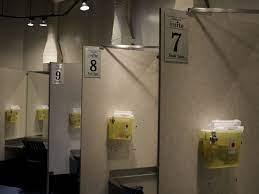Supervised consumption explained: types of sites and services

Harm Reduction
Drug Consumption Rooms
Overdose Prevention
Safe Injection Sites
Drug War
Drug Policy Reform
Overview
Originally Published: 02/08/2024
Post Date: 02/13/2024
Source Publication: Click here
by Government of Canada
Summary/Abstract
Supervised consumption services save lives and benefit communities. Supervised consumption sites provide a safe, clean space for people to bring their own drugs to use, in the presence of trained staff. This prevents accidental overdoses and reduces the spread of infectious diseases, such as HIV.
Content
The benefits of supervised consumptions sites and services
Canadian and international evidence show clearly that supervised consumption services help to save lives, connect people to social services and serve as pathways to treatment.
When properly established, these sites and services:
- reduce the risk of accidental overdose, because people are not rushing or using alone
- connect people to social services like housing, employment assistance and food banks
- provide or connect people to healthcare and treatment
- reduce public drug use and discarded drug equipment
- reduce spread of infectious diseases, such as HIV
- reduce strain on emergency medical services, so they can focus on other emergencies
- provides space for people to connect with staff and peers, which can help a person moderate their drug use and decide to pursue treatment
Services offered at sites
Sites are set up in areas where there are high rates of public drug use to provide important health, social and treatment services, such as:
- access to clean drug use equipment and a place to safely dispose of items, such as needles, after use
- drug checking to detect if drugs contain other more harmful substances
- emergency medical care in case of overdose, cardiac arrest or allergic reaction
- basic health services, such as wound care
- testing for infectious diseases like HIV, hepatitis C and sexually transmitted infections (STIs)
- access to health care providers and support staff, including mental health treatment
- education on the harms of drug use, safer consumption practices and safer sex
- access to medications to treat opioid use disorder under the oversight of a healthcare provider
- referrals for drug treatment, rehabilitation and other health services
- access or referrals to social services such as housing or employment supports
What happens at these sites
Sites provide a safe, clean space for people to bring their own drugs to use, in the presence of trained staff.
At a site:
- a person brings their drugs to a site to consume
- depending on the site, drugs are injected, snorted, inhaled or consumed as pills
- trained staff are available to help if there is an accidental overdose
- needs of the community determine hours of operation for sites and types of services provided
- type of staff varies by site, but generally includes nursing staff, social workers and peer and community workers
Find services near you
Visit the interactive map to find supervised consumption sites and services in your area.





